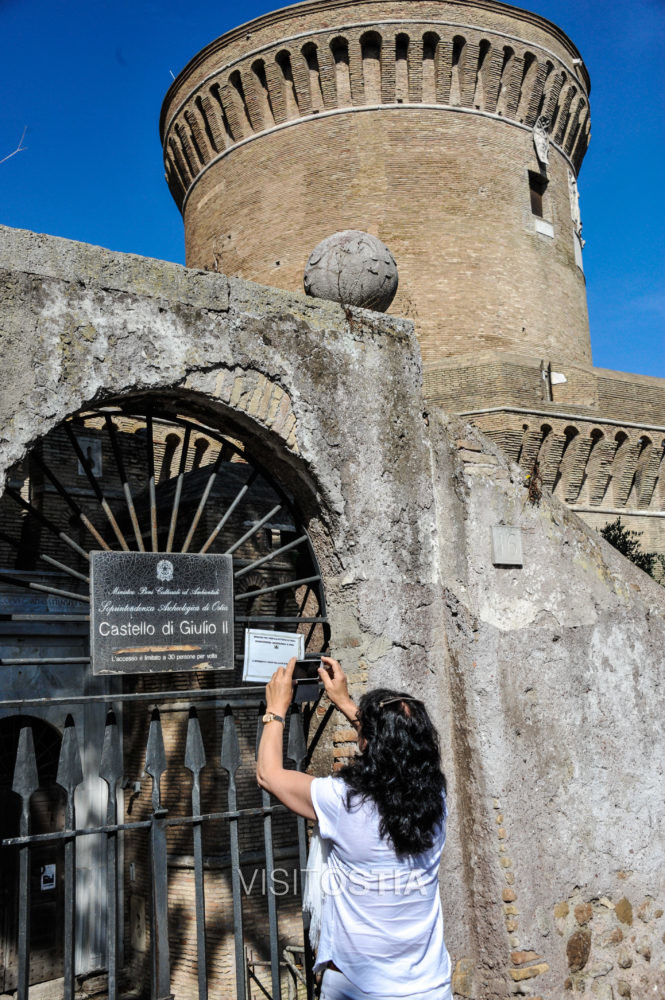Spectacular, magnificent, emotional: these are the right words to describe this little borgo (village) in Ostia Antica. It is a small place, full of history, which must absolutely be seen and lived to enjoy its timeless charm. It hosts exhibitions and events, very often it is a cinema set for films or ads. Many people have discovered its charisma: the U2 has set here some scenes of ‘All I want is you’, a musical video inspired to Federico Fellini, which accompanies one of the tracks in the Ruttle and Hum album in 1998.
In this location, which is completely pedestrian, you can drink some fantastic water from the fountain, whose basin is made out of a Roman sarcophagus or you can take advantage of the many restaurants in the small allies. In this way they do not ruin the beauty of the little square in front of the church and the castle.
The two monuments deserve to be visited accurately just as well as the Sala Riario in the Episcopio where 1977 were brought to light exceptionally beautiful frescoes by Baldassarre Peruzzi.
The history
It’s history dates back more than one thousand years, after a process of depopulation of the ancient Ostia Antica, it hosted a local community necropolis in IV and V century. In the IX century pope Gregorius IV established a little city which is named after him Grogoriopolis. It was surrounded by fortified walls and by a trench to defend the population from the terrible Saracen invasions.
At the beginning of the 15 th century pope Martin V expanded the fortifications and added a defensive tower, which today is incorporated in the castle built by Giuliano della Rovere in 1483, bishop of Ostia and afterwards pope Julius II.
It was designed by Baccio Pontelli who also designed S. Aurea’s church which is contiguous. Instead some believe that this church is a work of art by Giuliano da Sangallo.
This castle shows some innovative characteristics if compared to other military fortifications, these elements have convinced some experts that the architect could have been Francesco di Giorgio Martini. Baccio Pontelli was only his works supervisor. Only a few years before the three rows of terraced houses had been built. They are still visible and they represent the residential part of this borgo.
The aim of the fortification was to control the nearby salt flats and the commercial traffic along the Tiber, which flows under the castle and whose water filled un the ditch.
In 1557 a tremendous flood rerouted the river. So this fortress lost its outpost role, which was taken first by Tor Boacciana and then by Tor San Michele. This little structure built in 1564 possibly by Michelangelo today is still in place, even if it is very badly degradated in the Western part of Ostia.







